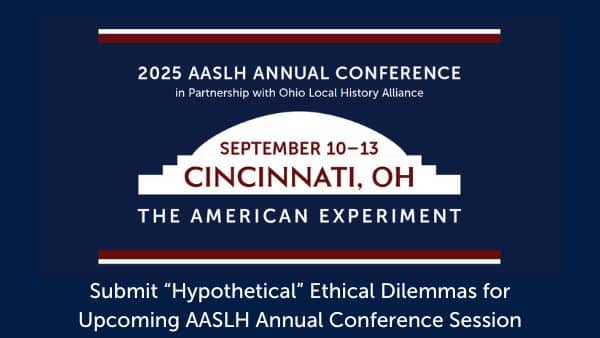Conferences offer a break from the daily norm of our jobs and a chance to learn something new and meet other practitioners. It is a time to reset, recharge, and reinvigorate our passion for the work we do. Reviewing the line-up for #AASLH17: I AM History, I was initially drawn to the session topics and the Tejano tour, which all seemed to align with my present work at the Indiana Historical Society. My current work focuses on filling in a gap within our society’s 188-year-old collection and bolstering the Latino and Asian narratives in Indiana. Given the opportunity to visit the state of Texas as a 2017 Douglas Evelyn Scholarship for Diversity winner and to meet Texas historians who work on interpreting the Latino narrative, which is undeniably woven within the fabric of the state’s history, was an attractive incentive for me to attend the conference.
 Our sessions left me with the feeling that museums and historical societies are at an interesting point of change in our present day history, almost similar to where museums were in the 1960s during the Civil Rights era. It was during that time that museums were forced to look at issues concerning diversity, equity, political movements, and conflicts. We are now hyper-aware of the depth of our responsibility as a public informal learning environment. We now understand the dangers of not fully acknowledging our history as it is happening around us. Museums and historical societies are continuing the shift from the proverbial temple to a forum. As practitioners, we are here to continue the conversation to change the conversation. We are doing more than educating, informing, and inspiring our audiences. We are in the new position of empowering them.
Our sessions left me with the feeling that museums and historical societies are at an interesting point of change in our present day history, almost similar to where museums were in the 1960s during the Civil Rights era. It was during that time that museums were forced to look at issues concerning diversity, equity, political movements, and conflicts. We are now hyper-aware of the depth of our responsibility as a public informal learning environment. We now understand the dangers of not fully acknowledging our history as it is happening around us. Museums and historical societies are continuing the shift from the proverbial temple to a forum. As practitioners, we are here to continue the conversation to change the conversation. We are doing more than educating, informing, and inspiring our audiences. We are in the new position of empowering them.
At the end of the conference, I felt like we were all given a “call to action” to continue to tell all sides of history, to continue to uplift the voices of history that are often lost to the ravages of time. And in our 2017 Program Chair Dina Bailey’s words, “Let’s continue to be courageous in pushing our limits and soaring to new heights as individuals and as an association.”




